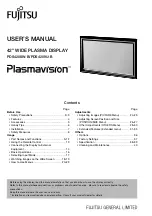
30
after the measurement with the symbol
. This can be an
indicator for arrhythmia. Arrhythmia is an illness in which the
heart rhythm is abnormal because of flaws in the bioelectrical
system that regulates the heartbeat. The symptoms (skipped
or premature heart beats, pulse being slow or too fast) can be
caused by factors such as heart disease, age, physical make-
up, excess stimulants, stress or lack of sleep. Arrhythmia can
only be determined through an examination by your doctor. If
the symbol
appears frequently, please consult your doc-
tor. Only they are able to determine any arrythmia during an
examination.
Risk indicator
The measurements can be classified and evaluated in accord-
ance with the following table.
However, these standard values serve only as a general guide-
line, as the individual blood pressure varies in different people
and different age groups etc.
It is important to consult your doctor regularly for advice. Your
doctor will tell you your individual values for normal blood pres-
sure as well as the value above which your blood pressure is
classified as dangerous.
The bar chart on the display and the scale on the device show
which category the recorded blood pressure values fall into.
If the values of systole and diastole fall into two different cat-
egories (e.g. systole in the high normal category and diastole in
the normal category), the graphical classification on the device
always shows the higher category; for the example given this
would be high normal.
Blood pressure
value category
Systole
(in mmHg)
Diastole
(in mmHg)
Action
Level 3:
severe hy-
pertension
red
≥ 180
≥ 110
Seek medical
attention
Level 2:
moderate
hyperten-
sion
orange 160 – 179
100 – 109 Seek medical
attention
Level 1:
mild hyper-
tension
yellow
140 – 159
90 – 99
Regular monitoring
by doctor
High nor-
mal
green
130 – 139
85 – 89
Regular monitoring
by doctor
Normal
green
120 – 129
80 – 84
Self-monitoring
Optimal
green
< 120
< 80
Self-monitoring
Source:
Saving, accessing and deleting measured values
The results of every successful measurement are stored to-
gether with the date and time. If there are more than 60 meas-
urements, the oldest measurements are lost.
• To access memory recall mode, the blood pressure monitor
must first be started. To do this press the Start/stop button
.
• After the full-screen display, select the relevant user mem-
ory that you want to see the measurement data for within 3
seconds using the
M1
or
M2
memory button (
M1
for or
M2
for ).
Summary of Contents for BM 45
Page 103: ...103 Beurer 1 104 2 104 3 105 4 105 5 108 6 109 7 111 8 116 9 116 10 117 11 117 12 118 13 120 C...
Page 105: ...105 Operating CE 3 4...
Page 106: ...106...
Page 107: ...107 20 C 2...
Page 108: ...108 5 SYS mmHg DIA mmHg PUL min 1 2 3 4 8 9 5 6 7 1 2 3 4 5 6 M1 M2 7 8 9...
Page 110: ...110 P 5 M1 M2 M1 M2 M1 M2 M1 M2 12...
Page 111: ...111 M1 M2 M1 M2 7 30 5 1 163 388 22 36 163 387 35 44...
Page 112: ...112 2 3 OK 3...
Page 113: ...113 M1 M2 M1 M2 3...
Page 114: ...114 3 180 110 2 160 179 100 109 1 140 159 90 99 130 139 85 89...
Page 116: ...116 M1 M2 03 M1 M2 M1 M2 5 8 9 22 36 163 388 35 44 163 387 071 95...
Page 117: ...117 10 300 11 WEEE Waste Electrical and Electronic Equipment...
Page 120: ...120 13...
Page 138: ...138...
Page 139: ...139...
















































